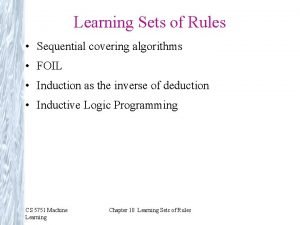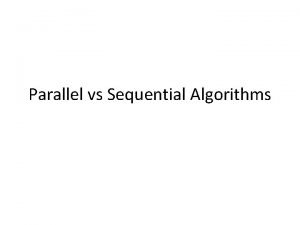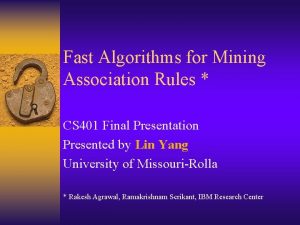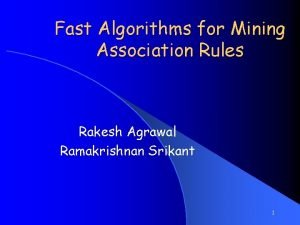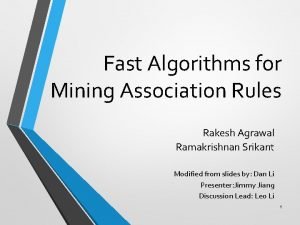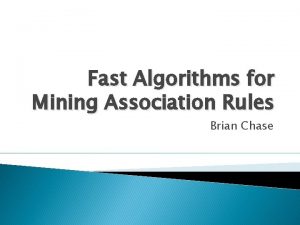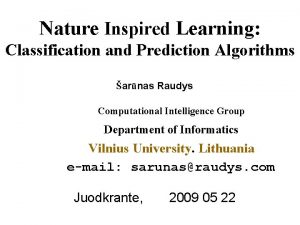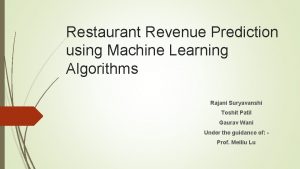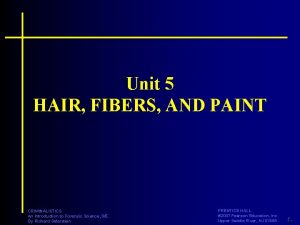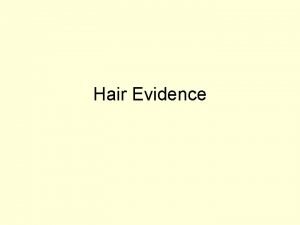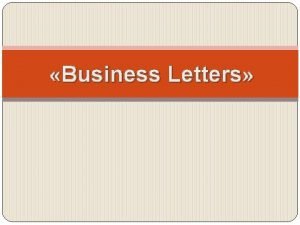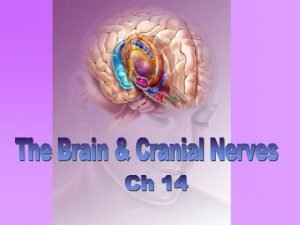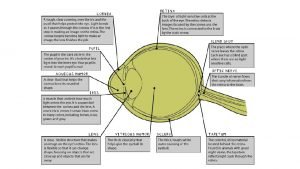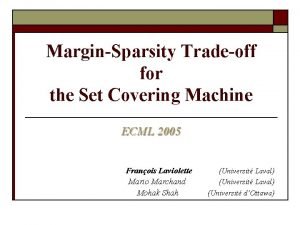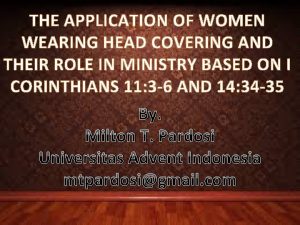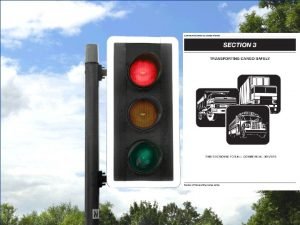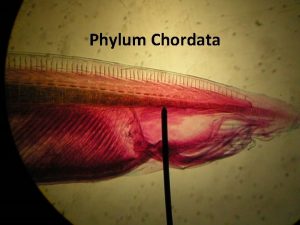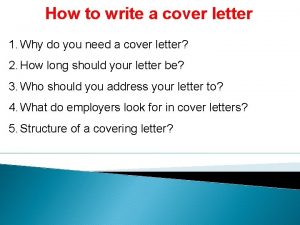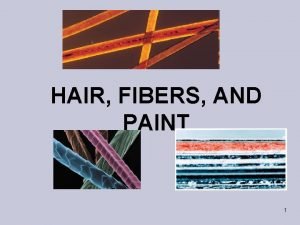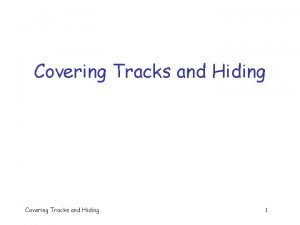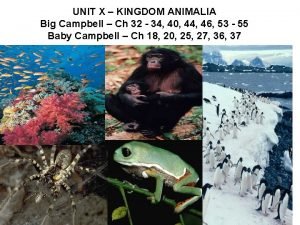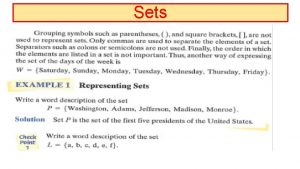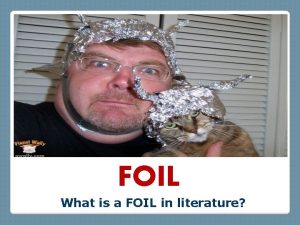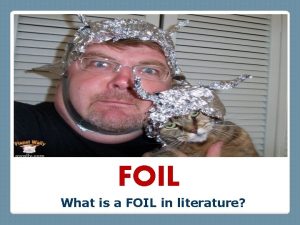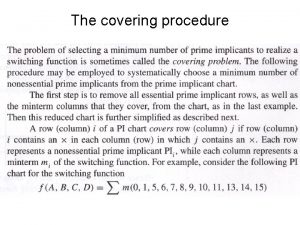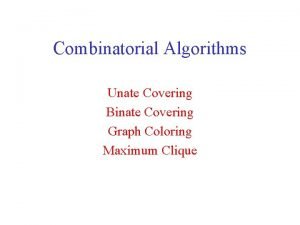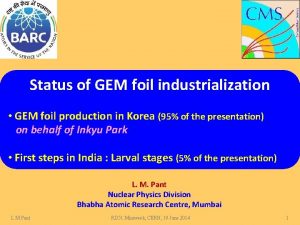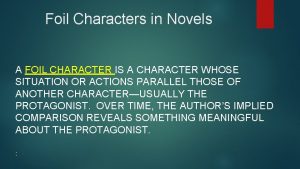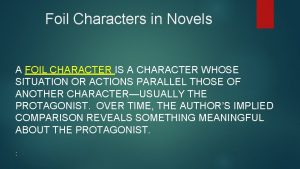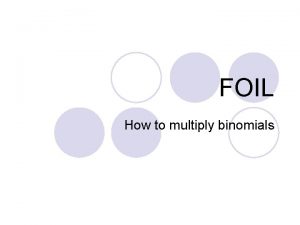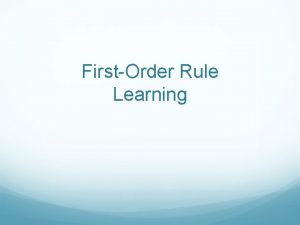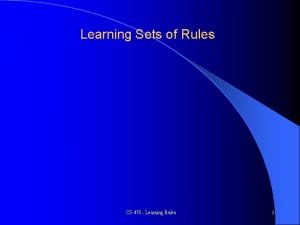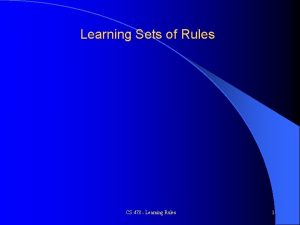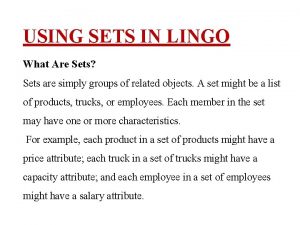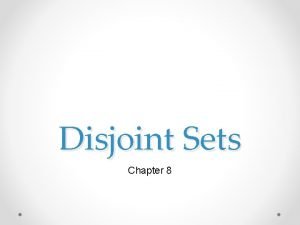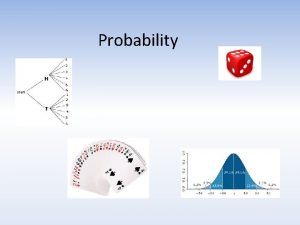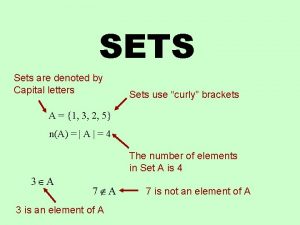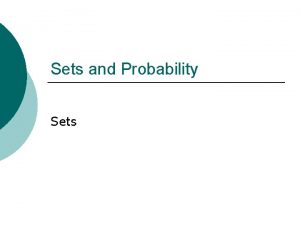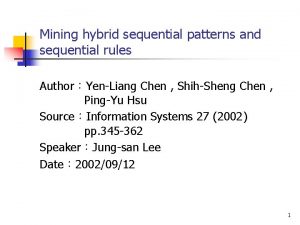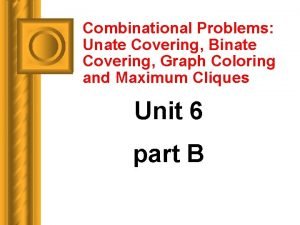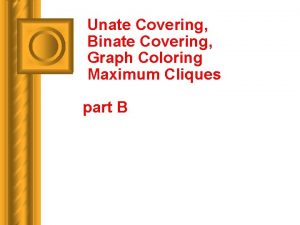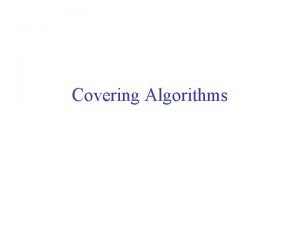Learning Sets of Rules Sequential covering algorithms FOIL

























- Slides: 25

Learning Sets of Rules • Sequential covering algorithms • FOIL • Induction as the inverse of deduction • Inductive Logic Programming CS 5751 Machine Learning Chapter 10 Learning Sets of Rules

Learning Disjunctive Sets of Rules Method 1: Learn decision tree, convert to rules Method 2: Sequential covering algorithm 1. Learn one rule with high accuracy, any coverage 2. Remove positive examples covered by this rule 3. Repeat CS 5751 Machine Learning Chapter 10 Learning Sets of Rules

Sequential Covering Algorithm SEQUENTIAL-COVERING(Target_attr, Attrs, Examples, Thresh) Learned_rules {} Rule LEARN-ONE-RULE(Target_attr, Attrs, Examples) while PERFORMANCE(Rule, Examples) > Thresh do – Learned_rules + Rule – Examples - {examples correctly classified by Rule} – Rule LEARN-ONE-RULE(Target_attr, Attrs, Examples) Learned_rules sort Learned_rules according to PERFORMANCE over Examples return Learned_rules CS 5751 Machine Learning Chapter 10 Learning Sets of Rules

Learn-One-Rule IF THEN Cool. Car=Yes IF Doors = 4 THEN Cool. Car=Yes IF Type = SUV THEN Cool. Car=Yes IF Type = Car THEN Cool. Car=Yes IF Type = SUV AND Doors = 2 IF Type = SUV AND THEN Cool. Car=Yes Doors = 4 THEN Cool. Car=Yes CS 5751 Machine Learning Chapter 10 Learning Sets of Rules IF Type = SUV AND Color = Red THEN Cool. Car=Yes 4

Covering Rules Pos positive Examples Neg negative Examples while Pos do (Learn a New Rule) New. Rule most general rule possible Neg. Examples. Covered Neg while Neg. Examples. Covered do Add a new literal to specialize New. Rule 1. Candidate_literals generate candidates 2. Best_literal argmax. L candidate_literals PERFORMANCE(SPECIALIZE-RULE(New. Rule, L)) 3. Add Best_literal to New. Rule preconditions 4. Neg. Examples. Covered subset of Neg. Examples. Covered that satistifies New. Rule preconditions Learned_rules + New. Rule Pos - {members of Pos covered by New. Rule} Return Learned_rules CS 5751 Machine Learning Chapter 10 Learning Sets of Rules

Subtleties: Learning One Rule 1. May use beam search 2. Easily generalize to multi-valued target functions 3. Choose evaluation function to guide search: – Entropy (i. e. , information gain) – Sample accuracy: where nc = correct predictions, n = all predictions – m estimate: CS 5751 Machine Learning Chapter 10 Learning Sets of Rules

Variants of Rule Learning Programs • Sequential or simultaneous covering of data? • General specific, or specific general? • Generate-and-test, or example-driven? • Whether and how to post-prune? • What statistical evaluation functions? CS 5751 Machine Learning Chapter 10 Learning Sets of Rules

Learning First Order Rules Why do that? • Can learn sets of rules such as Ancestor(x, y) Parent(x, y) Ancestor(x, y) Parent(x, z) Ancestor(z, y) • General purpose programming language PROLOG: programs are sets of such rules CS 5751 Machine Learning Chapter 10 Learning Sets of Rules

First Order Rule for Classifying Web Pages From (Slattery, 1997) course(A) has-word(A, instructor), NOT has-word(A, good), link-from(A, B) has-word(B, assignment), NOT link-from(B, C) Train: 31/31, Test 31/34 CS 5751 Machine Learning Chapter 10 Learning Sets of Rules

FOIL(Target_predicate, Predicates, Examples) Pos positive Examples Neg negative Examples while Pos do (Learn a New Rule) New. Rule most general rule possible Neg. Examples. Covered Neg while Neg. Examples. Covered do Add a new literal to specialize New. Rule 1. Candidate_literals generate candidates 2. Best_literal argmax. L candidate_literal FOIL_GAIN(L, New. Rule) 3. Add Best_literal to New. Rule preconditions 4. Neg. Examples. Covered subset of Neg. Examples. Covered that satistifies New. Rule preconditions Learned_rules + New. Rule Pos - {members of Pos covered by New. Rule} Return Learned_rules CS 5751 Machine Learning Chapter 10 Learning Sets of Rules

Specializing Rules in FOIL Learning rule: P(x 1, x 2, …, xk) L 1…Ln Candidate specializations add new literal of form: • Q(v 1, …, vr), where at least one of the vi in the created literal must already exist as a variable in the rule • Equal(xj, xk), where xj and xk are variables already present in the rule • The negation of either of the above forms of literals CS 5751 Machine Learning Chapter 10 Learning Sets of Rules

Information Gain in FOIL Where • L is the candidate literal to add to rule R • p 0 = number of positive bindings of R • n 0 = number of negative bindings of R • p 1 = number of positive bindings of R+L • n 1 = number of negative bindings of R+L • t is the number of positive bindings of R also covered by R+L Note • is optimal number of bits to indicate the class of a positive binding covered by R CS 5751 Machine Learning Chapter 10 Learning Sets of Rules

Induction as Inverted Deduction Induction is finding h such that ( <xi, f(xi)> D) B h xi |– f(xi) where • xi is the ith training instance • f(xi) is the target function value for xi • B is other background knowledge So let’s design inductive algorithms by inverting operators for automated deduction! CS 5751 Machine Learning Chapter 10 Learning Sets of Rules

Induction as Inverted Deduction “pairs of people, <u, v> such that child of u is v, ” f(xi) : Child(Bob, Sharon) xi : Male(Bob), Female(Sharon), Father(Sharon, Bob) B : Parent(u, v) Father(u, v) What satisfies ( <xi, f(xi)> D) B h xi |– f(xi)? h 1 : Child(u, v) Father(v, u) h 2 : Child(u, v) Parent(v, u) CS 5751 Machine Learning Chapter 10 Learning Sets of Rules

Induction and Deduction Induction is, in fact, the inverse operation of deduction, and cannot be conceived to exist without the corresponding operation, so that the question of relative importance cannot arise. Who thinks of asking whether addition or subtraction is the more important process in arithmetic? But at the same time much difference in difficulty may exist between a direct and inverse operation; … it must be allowed that inductive investigations are of a far higher degree of difficulty and complexity than any question of deduction … (Jevons, 1874) CS 5751 Machine Learning Chapter 10 Learning Sets of Rules

Induction as Inverted Deduction We have mechanical deductive operators F(A, B) = C, where A B |– C need inductive operators O(B, D) = h where ( <xi, f(xi)> D) B h xi |– f(xi) CS 5751 Machine Learning Chapter 10 Learning Sets of Rules

Induction as Inverted Deduction Positives: • Subsumes earlier idea of finding h that “fits” training data • Domain theory B helps define meaning of “fit” the data B h xi |– f(xi) • Suggests algorithms that search H guided by B Negatives: • Doesn’t allow for noisy data. Consider ( <xi, f(xi)> D) B h xi |– f(xi) • First order logic gives a huge hypothesis space H – overfitting… – intractability of calculating all acceptable h’s CS 5751 Machine Learning Chapter 10 Learning Sets of Rules

Deduction: Resolution Rule P L ¬L R P R 1. Given initial clauses C 1 and C 2, find a literal L from clause C 1 such that ¬ L occurs in clause C 2. 2. Form the resolvent C by including all literals from C 1 and C 2, except for L and ¬ L. More precisely, the set of literals occurring in the conclusion C is C = (C 1 - {L}) (C 2 - {¬ L}) where denotes set union, and “-” set difference. CS 5751 Machine Learning Chapter 10 Learning Sets of Rules

Inverting Resolution C 1: Pass. Exam ¬Know. Material C 2: Know. Material ¬Study C: Pass. Exam ¬Study CS 5751 Machine Learning Chapter 10 Learning Sets of Rules 19

Inverted Resolution (Propositional) 1. Given initial clauses C 1 and C, find a literal L that occurs in clause C 1, but not in clause C. 2. Form the second clause C 2 by including the following literals C 2 = (C - (C 1 - {L})) {¬ L} CS 5751 Machine Learning Chapter 10 Learning Sets of Rules

First Order Resolution 1. Find a literal L 1 from clause C 1 , literal L 2 from clause C 2, and substitution such that L 1 = ¬L 2 2. Form the resolvent C by including all literals from C 1 and C 2 , except for L 1 theta and ¬L 2. More precisely, the set of literals occuring in the conclusion is C = (C 1 - {L 1}) (C 2 - {L 2 }) Inverting: C 2 = (C - (C 1 - {L 1}) 1) 2 -1 {¬L 1 1 2 -1} CS 5751 Machine Learning Chapter 10 Learning Sets of Rules

Cigol Father(Tom, Bob) Grand. Child(y, x) ¬Father(x, z) ¬Father(z, y)) {Bob/y, Tom/z} Father(Shannon, Tom) Grand. Child(Bob, x) ¬Father(x, Tom)) {Shannon/x} Grand. Child(Bob, Shannon) CS 5751 Machine Learning Chapter 10 Learning Sets of Rules 22

Progol PROGOL: Reduce combinatorial explosion by generating the most specific acceptable h 1. User specifies H by stating predicates, functions, and forms of arguments allowed for each 2. PROGOL uses sequential covering algorithm. For each <xi, f(xi)> – Find most specific hypothesis hi s. t. B hi xi |– f(xi) actually, only considers k-step entailment 3. Conduct general-to-specific search bounded by specific hypothesis hi, choosing hypothesis with minimum description length CS 5751 Machine Learning Chapter 10 Learning Sets of Rules

Learning Rules Summary • Rules: easy to understand – Sequential covering algorithm – generate one rule at a time – general to specific - add antecedents – specific to general - delete antecedents – Q: how to evaluate/stop? • First order logic and covering – how to connect variables – FOIL CS 5751 Machine Learning Chapter 10 Learning Sets of Rules

Learning Rules Summary (cont) • Induction as inverted deduction – what background rule would allow deduction? – resolution – inverting resolution – and first order logic • Cigol, Progol CS 5751 Machine Learning Chapter 10 Learning Sets of Rules
 Sequential covering algorithm in data mining
Sequential covering algorithm in data mining Pram
Pram Fast algorithms for mining association rules
Fast algorithms for mining association rules Fast algorithms for mining association rules
Fast algorithms for mining association rules Fast algorithms for mining association rules
Fast algorithms for mining association rules Fast algorithms for mining association rules
Fast algorithms for mining association rules Nature-inspired learning algorithms
Nature-inspired learning algorithms Revenue prediction machine learning
Revenue prediction machine learning Cuadro comparativo entre e-learning b-learning y m-learning
Cuadro comparativo entre e-learning b-learning y m-learning Cigna not covering vitamin d testing
Cigna not covering vitamin d testing Cigna vitamin d policy
Cigna vitamin d policy The scale structure covering the exterior of the hair
The scale structure covering the exterior of the hair Visceral pericardium covering heart
Visceral pericardium covering heart The scale structure covering the exterior of the hair
The scale structure covering the exterior of the hair Placing order
Placing order Menenges
Menenges Clear fluid that helps the cornea keep its rounded shape
Clear fluid that helps the cornea keep its rounded shape Set covering machine
Set covering machine Signed statement for head covering
Signed statement for head covering To safely transport cargo use
To safely transport cargo use Notochord
Notochord Whats a covering letter
Whats a covering letter What does the medulla do in hair
What does the medulla do in hair Tunica vaginalis
Tunica vaginalis Covering tracks
Covering tracks Body covering of animals
Body covering of animals
